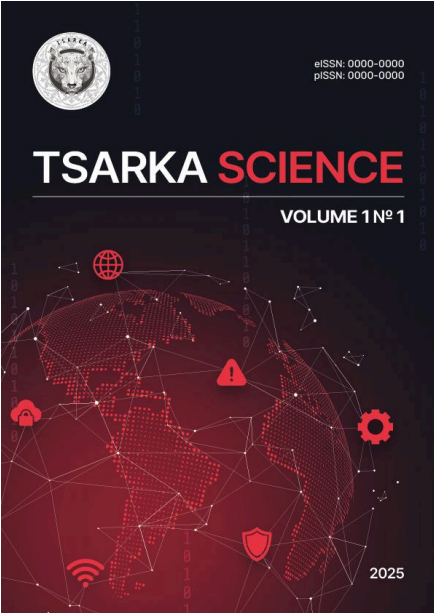About the Journal
Aims and Scope
The main objective of the TSARKA SCIENCE journal is to promote the dissemination of scientific knowledge and innovations in the field of digital security, as well as to support young researchers and professionals. We aim to foster a professional dialogue between the academic community, developers, and industry representatives.
Main thematic areas
- Information Security and Data Protection
- Information security
- Cyber threats and malware
- Information security tools (ISS)
- Hardware security and system reliability
- Cryptography
- Digital forensics
- Information and Communication Technologies and Telecommunications
- ICT
- Telecommunications
- Internet of Things (IoT)
- Hardware and embedded systems
- IT Applications and Emerging Technologies
- IT in education and management
- Design automation and advanced manufacturing technologies
Open access and Archiving policy
The journal TSARKA SCIENCE adheres to an open access policy. All articles published in the journal are freely available on its official website. The archives of past issues are also accessible without any restrictions.
The journal uses the LOCKSS (Lots of Copies Keep Stuff Safe) system to ensure long-term preservation and recovery of published materials through a distributed archiving network.
Сopyright Policy
TSARKA SCIENCE is an open access journal, which means that all published materials are freely available for reading, downloading, distribution, and use under the terms of a Creative Commons license.
Articles published in the journal are distributed under the CC BY-NC-ND (Attribution – NonCommercial – NoDerivatives) license.
By publishing in the journal, authors agree to the following terms:
-
The author retains copyright and grants the journal the right of first publication.
-
Authors may enter into separate, additional agreements for non-exclusive distribution of the published version, provided that proper credit is given to the original publication in the journal.
-
The article may be deposited in an institutional repository with a reference to the original source.
Peer Review
All submitted manuscripts undergo a preliminary evaluation by the editorial board to ensure compliance with the journal’s scope and scientific standards. Once approved, the manuscripts are sent for double-blind peer review.
The review is conducted by two independent experts in the relevant field. The identities of both the authors and reviewers are concealed throughout the entire review process.
The editorial board reserves the right to make the final decision on publication based on the reviewers' assessments, taking into account their objectivity, expertise, and reasoning.
Plagiarism and Misuse of Sources
All articles are checked for plagiarism using specialized detection systems prior to publication. The required originality level is at least 80%.
If a significant amount of unoriginal content is identified, the editorial board reserves the right to reject the manuscript and notify the author.


